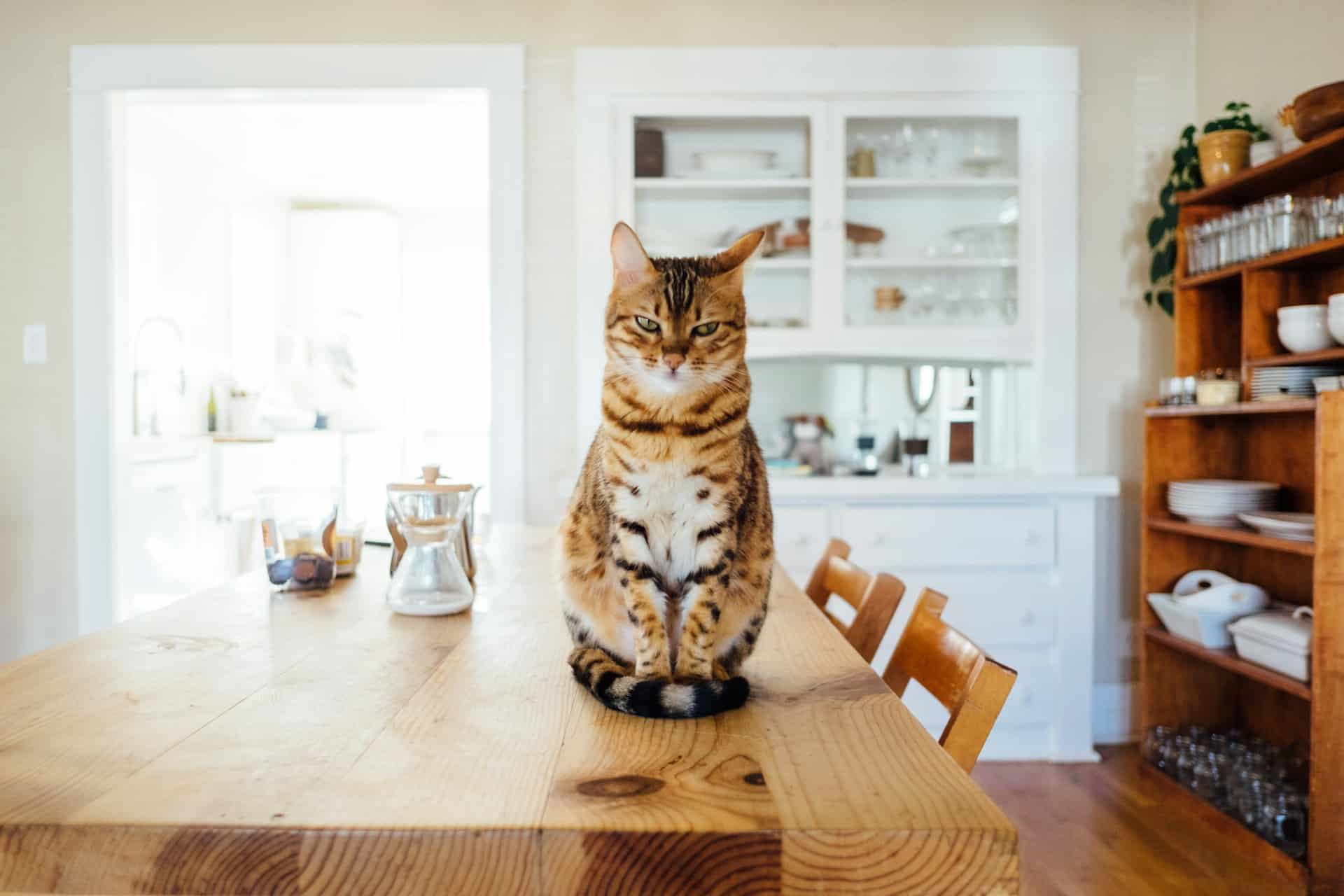The joy of being a pet owner often comes with its unique set of challenges. For those who own cats and also have a fascination for aquariums or terrariums, the question often arises: how do you get your feline friend to coexist peacefully with the aquatic or reptilian inhabitants of these tanks? This is a delicate task, as cats are natural predators with a propensity for chasing small creatures. Fear not, it is entirely possible to gently acclimate your cat to the presence of an aquarium or terrarium in the home. This article will explore various effective methods to help facilitate this process.
Understanding the Instincts of the Cat
Firstly, it is important to comprehend the instincts at play. Cats are hunters by nature, drawn to movement and the idea of the ‘chase’. The flicker of fish in an aquarium or the scuttle of a gecko in a terrarium can trigger these instincts. Understanding this well will make it easier to implement strategies aimed at acclimating your cat to the presence of these enclosures.
Lire également : How do you adjust a cat's sleeping area to accommodate arthritis and orthopedic pain?
One way to mitigate the cat’s instinctive reactions is to divert its attention. Engage your cat in frequent play sessions, using toys that mimic the movement of prey. This can help satisfy its hunting instincts in a controlled and safe environment.
Another method includes gradually introducing the cat to the aquarium or terrarium. Ideally, this should be a slow process where the cat is allowed to observe the tank from a safe distance, under your supervision. With time, the cat will become familiar with the enclosure and its inhabitants, reducing its initial curiosity and predatory response to it.
Sujet a lire : How do you prepare a cat for a safe and calm experience during a solar eclipse?
Choosing the Right Location for the Aquarium or Terrarium
The location of the aquarium or terrarium within the home is crucial in helping your cat adapt. Enclosures should be placed in areas where cats will find it difficult to reach. Higher shelves or secure cabinets are good options.
Also, ensure the area around the enclosure is free from items that the cat could use as a stepping stool. This includes chairs, tables, or other pieces of furniture that the cat might climb onto to reach the enclosure.
Consider adding an extra layer of protection by placing a sturdy screen or mesh over the tank. This will prevent your cat from directly accessing the inhabitants, while still allowing it to observe.
Introducing the Inhabitants of the Aquarium or Terrarium
The type of inhabitants in the tank can also influence a cat’s reaction. Aquatic creatures like fish, or reptiles like geckos or the leopard-sized bearded dragon, can stimulate a cat’s curiosity due to their movement.
Remember, it is important to spend time with your cat when introducing it to the inhabitants of the tank. If you own an aquarium, you could feed the fish in your cat’s presence, helping it understand that these creatures are not its food but part of the family. If you own a terrarium, handle the reptiles – under the right conditions and with proper hygiene practices – in front of your cat. This can help communicate to the cat that these creatures are friends, not prey.
Maintaining a Balanced Environment
Harmony between pets relies heavily on maintaining a balanced environment. Ensuring that both the cat and the inhabitants of the tank have their own space is essential.
When it comes to creating a proper environment for the aquatic or reptilian pets, make sure that the humidity and temperature levels in the tank are suitable for them. For example, geckos require a warm and humid environment. Regularly mist the terrarium with water and use heat lamps to maintain the necessary temperature.
On the other hand, cats are generally most comfortable in a moderate room temperature and humidity. Ensure they have cozy and safe sleeping spots away from the tanks.
Using Positive Reinforcement Techniques
Lastly, using positive reinforcement techniques can be highly beneficial in training your cat to accept the presence of an aquarium or terrarium. When your cat behaves well around the tank, reward it with treats, praise, or extra cuddles. This will associate the presence of the tank with positive experiences and make your cat less likely to act out.
Remember, every cat is unique and will respond differently to these methods. Patience and consistency are key in this process. By taking the time to understand your cat’s instincts, choose the right location for your tank, introduce the inhabitants properly, maintain a balanced environment, and use positive reinforcement techniques, you can foster a peaceful cohabitation between your cat and the fascinating world within your aquarium or terrarium.
Selecting Suitable Life Forms for Your Tanks
When choosing the life forms for your aquarium or terrarium, it is important to consider your cat’s hunting instincts. For instance, while leopard geckos and crested geckos might easily stimulate your cat due to their quick and sudden movements, opting for less active reptiles such as bearded dragons might be more suitable. Bearded dragons are usually larger and slower, thus less likely to trigger your pet’s hunting instincts.
In terms of aquatic animals, select fish species that don’t move too quickly or erratically. Fast-moving creatures can pique a cat’s interest, potentially leading to a more disruptive interaction. Gentle, slow-swimming fish can still provide a fascinating display for both you and your pet without overly exciting your cat.
Moreover, when setting up your aquarium, consider adding elements like seed pods and botanicals leaves. A company like Tannin Aquatics offers a range of natural products to create biologically diverse, aesthetically pleasing environments for your aquatic pets. Not only do these elements contribute to maintaining good water parameters for your aquatic animals, but they also create a more naturalistic aquarium keeping environment that might be less intriguing to your cat.
For your terrarium, consider using elements like leaf litter and other natural materials. This creates an environment that closely mimics their natural habitat for creatures like leopard geckos, crested geckos, or bearded dragons. Scott Fellman from Tannin Aquatics, also known as ‘Wet Scott,’ recommends using their ‘Stay Wet’ line of products to maintain a consistently humid and comfortable environment for your reptilian pets.
Consider also the use of live plants in your terrarium. They not only contribute to the overall visual appeal, but they also help maintain the humidity and temperature within the gecko enclosure, making it a comfortable long-term habitat for your pets.
Conclusion: Embracing a Harmonious Pet Environment
Acclimating your cat to the presence of an aquarium or terrarium requires a careful, patient approach. Whether you have a leopard gecko scrambling around your terrarium or a school of fish darting in your aquarium, your cat’s natural instincts will be piqued. However, by understanding and respecting these instincts, you can successfully create a harmonious environment for all your pets.
Choosing a suitable location for your tanks is essential. The tank should not be within your cat’s easy reach. By gradually introducing your cat to the tanks and their inhabitants, and carefully selecting less stimulating life forms, you can reduce its hunting instincts. Regularly maintaining a balanced tank environment, by following experts’ advice like that of Scott Fellman, will ensure a comfortable habitat for your pets, whether they prefer to stay wet or dry.
Utilizing positive reinforcement techniques can be a powerful tool in shaping your cat’s behavior around the tanks. Reward your pet’s good behavior with treats, praise, or extra cuddles to promote peaceful cohabitation.
Lastly, patience and consistency are essential in this process. It may take time for your cat to fully acclimate to the new family members, but with perseverance, you can create a peaceful cohabitation between your cat and the fascinating world within your aquarium or terrarium. The joy of seeing your pets coexist peacefully is indeed worth the effort. After all, a pet-filled home is a home filled with love and life, making it all the more rewarding for you as a pet owner.











